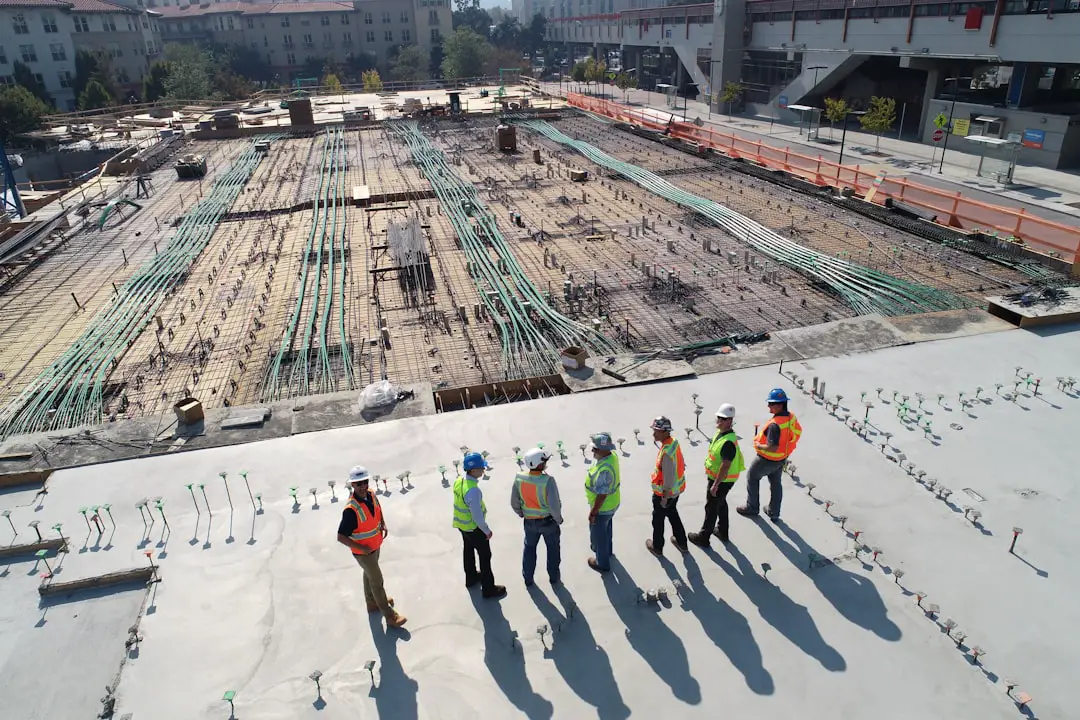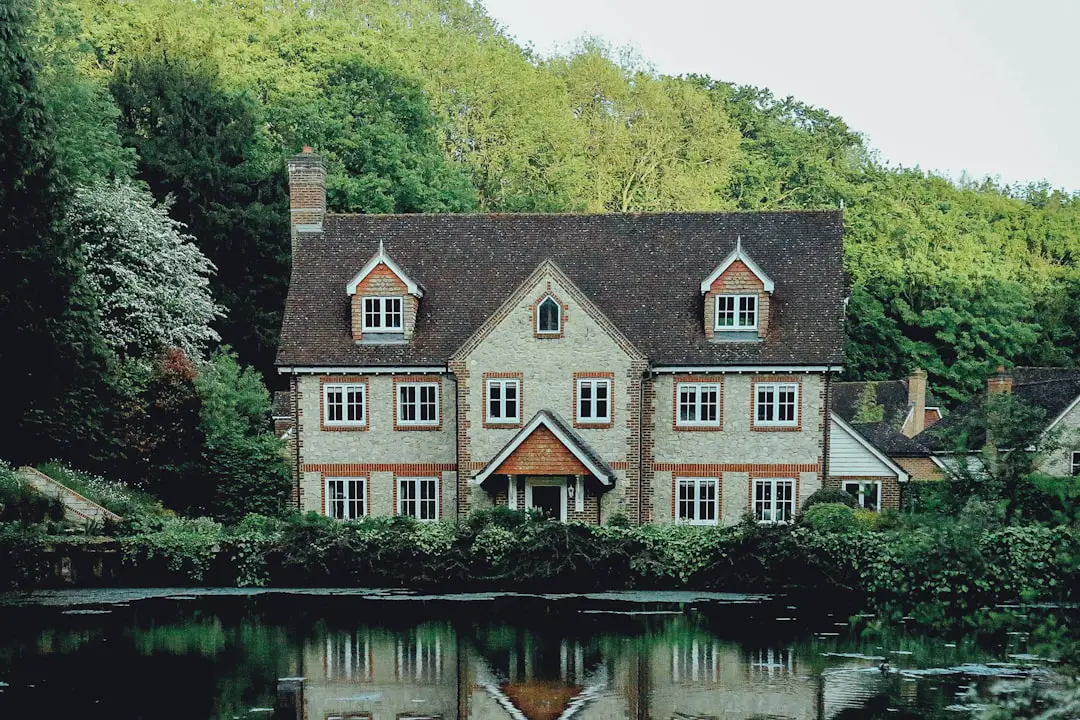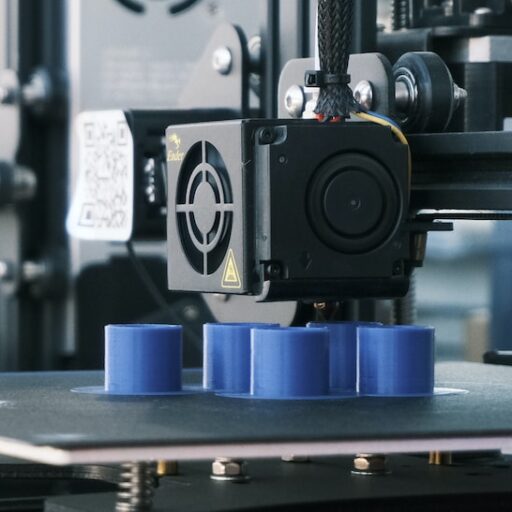Support our educational content for free when you purchase through links on our site. Learn more
How Much Does a 3D Printed Home Cost? 7 Key Insights for 2025 🏡

Have you ever imagined living in a house that was printed layer by layer, like a giant 3D puzzle? Welcome to the future of housing! As 3D printing technology continues to evolve, the concept of 3D-printed homes is becoming more mainstream, raising questions about cost, construction time, and sustainability. In this article, we’ll break down everything you need to know about the costs associated with 3D-printed homes, including factors that influence pricing and real-world examples that showcase this innovative building method.
Did you know that some companies claim to print a home in just 24 hours? That’s right! But before you dive into the world of 3D-printed living, it’s crucial to understand the financial implications and what to expect. Are you ready to explore the fascinating world of 3D-printed homes and discover if they fit your budget? Let’s get started!
Key Takeaways
- Cost Factors: The price of a 3D-printed home varies based on size, design, location, and materials used.
- Speed of Construction: Homes can be printed in as little as 24-72 hours, significantly faster than traditional building methods.
- Sustainability Potential: 3D printing can reduce waste and utilize eco-friendly materials, making it a greener option.
- Customization: These homes allow for unique designs tailored to individual preferences.
- Financing Challenges: Navigating mortgages and insurance for 3D-printed homes may require specialized knowledge.
Ready to explore more about 3D printing? 👉 Shop 3D Printing Innovations on: Amazon or Explore 3D Printable Objects on: Thingiverse!
Table of Contents
Quick Tips and Facts
The Evolution of 3D-Printed Homes: A Brief History
What Exactly Are 3D-Printed Houses?
The Process of Building 3D-Printed Homes: How Does It Work?
Timeframe for Construction: How Long Does It Take to 3D Print a House?
Breaking Down the Costs: How Much Does a 3D-Printed House Cost?
The Future of Housing: When Will 3D-Printed Houses Become Mainstream?
Showcasing Innovation: Examples of 3D-Printed Houses Around the World
Pros and Cons of 3D-Printed Homes: What You Need to Know
Environmental Impact: Are 3D-Printed Homes Sustainable?
Financing Your 3D-Printed Home: What Are Your Options?
Frequently Asked Questions
Conclusion
Recommended Links
FAQ
Reference Links
Quick Tips and Facts
- 3D-printed homes are built using giant 3D printers that extrude layers of material like concrete to create walls and other structural components. 🤯
- Costs for a 3D-printed home can vary widely but are often touted as being cheaper than traditional construction methods. However, this doesn’t always include things like land, foundation, or interior finishes. 🤔
- Printing time for the walls of a 3D-printed home can be surprisingly fast, sometimes as little as 24 hours! 💨 But remember, that doesn’t mean the entire house is move-in ready in a day.
- 3D printing offers exciting possibilities for sustainable building, with some companies using recycled materials or exploring eco-friendly concrete alternatives. 🌱
The Evolution of 3D-Printed Homes: A Brief History

The concept of 3D printing, also known as additive manufacturing, has been around since the 1980s. However, it wasn’t until recent years that the technology advanced enough to make 3D-printed houses a tangible reality. Early experiments focused on small-scale models and prototypes, but as the technology matured and larger printers were developed, the dream of printing full-sized homes began to take shape.
One of the earliest examples of a habitable 3D-printed house was completed in 2018 in Russia. This small, 37-square-meter structure, built by a company called Apis Cor, demonstrated the potential of 3D printing to create affordable and rapidly constructed housing.
Since then, the field of 3D-printed homes has exploded with innovation. Companies around the world are developing new printing techniques, experimenting with different materials, and pushing the boundaries of architectural design. From small, minimalist dwellings to multi-story homes and even potential solutions for affordable housing, 3D printing is rapidly changing the landscape of the construction industry.
What Exactly Are 3D-Printed Houses?
Imagine a house built not brick by brick, but layer by layer, like a cake from a high-tech icing dispenser. That’s the basic idea behind 3D-printed houses! They are structures built using a giant 3D printer that deposits layers of a special “ink,” usually a concrete mixture, to create the walls, and in some cases, the roof and other structural elements.
These printers, much larger than the ones you might find in a home or office, follow digital blueprints to precisely extrude the building material, layer upon layer, until the walls rise to their full height. Think of it like a robot carefully following a recipe to build your dream home! 🤖
The Process of Building 3D-Printed Homes: How Does It Work?
Curious about the step-by-step process? Let’s break it down:
- Design: It all starts with a digital 3D model of the house, carefully crafted using 3D design software. This blueprint guides the printer’s every move.
- Foundation: Just like traditional homes, 3D-printed houses need a solid foundation. This is typically done using conventional construction methods.
- Printing: The magic happens! The 3D printer, often mounted on a robotic arm, swings into action, extruding the building material (usually a concrete mixture) layer by layer, following the digital blueprint.
- Curing: The extruded material needs time to harden or “cure.” This allows the layers to bond, creating strong, load-bearing walls.
- Installation: Once the walls are printed and cured, windows, doors, roofing, plumbing, electrical systems, and other essential components are installed. This often involves a combination of 3D printing and traditional construction techniques.
- Finishing Touches: Finally, the interior and exterior finishes are added, just like in a conventionally built home. This includes things like flooring, paint, fixtures, and all the details that make a house a home.
Timeframe for Construction: How Long Does It Take to 3D Print a House?
One of the most appealing aspects of 3D-printed homes is their speed of construction. While it varies depending on the size and complexity of the design, printing the walls themselves can often be done in as little as 24-72 hours! That’s significantly faster than traditional building methods.
However, it’s important to remember that this doesn’t include the time needed for site preparation, foundation work, installation of utilities and finishes, or any unforeseen delays.
Breaking Down the Costs: How Much Does a 3D-Printed House Cost?
Ah, the million-dollar question (sometimes literally!). The cost of a 3D-printed home can vary widely depending on several factors:
- Size and Design: Just like traditional homes, larger and more complex designs will generally cost more.
- Location: Labor and material costs can fluctuate depending on where you’re building.
- Materials: The type of “ink” used in the printing process can impact the price. Some companies are exploring innovative, eco-friendly materials that might come with a different price tag.
- Level of Finish: Are you looking for a basic structure or a move-in-ready home with all the bells and whistles? The level of interior and exterior finishes will significantly influence the overall cost.
While 3D printing is often touted as a more affordable way to build, it’s essential to consider all the associated costs.
The Future of Housing: When Will 3D-Printed Houses Become Mainstream?
Will we all be living in 3D-printed homes in the future? 🔮 While it’s hard to say for sure, the technology is rapidly advancing and gaining traction. As the costs continue to decrease and the efficiency improves, 3D-printed homes have the potential to revolutionize the housing market.
Several factors could accelerate their adoption:
- Increased Affordability: As the technology matures and becomes more widely available, the cost of 3D-printed homes is expected to decrease, making them a more accessible option for a wider range of homebuyers.
- Sustainability: 3D printing offers the potential for more sustainable building practices, using less material, producing less waste, and even incorporating recycled or eco-friendly materials.
- Speed of Construction: The ability to print a house’s walls in a matter of days could significantly reduce construction timelines, addressing housing shortages and providing faster disaster relief housing.
Showcasing Innovation: Examples of 3D-Printed Houses Around the World
The world of 3D-printed homes is brimming with exciting projects! Here are a few notable examples:
- Europe’s First 3D-Printed House: Located in Eindhoven, Netherlands, this project showcased the potential of 3D printing to create unique and sustainable housing solutions.
- Affordable Housing Solutions: In Mexico, a company called Échale is using 3D printing to build low-cost, earthquake-resistant homes for families in need.
- Luxury 3D-Printed Homes: High-end architecture firms are even getting in on the action, designing stunning, custom 3D-printed homes with sleek designs and sustainable features.
Pros and Cons of 3D-Printed Homes: What You Need to Know
Like any new technology, 3D-printed homes come with their own set of advantages and disadvantages.
Pros:
- Potential Cost Savings: 3D printing can reduce labor costs and minimize material waste, potentially leading to lower overall construction costs.
- Faster Construction: Printing a home’s structure in days rather than months is a game-changer, especially in areas with housing shortages or in need of rapid disaster relief.
- Design Flexibility: 3D printing allows for greater architectural freedom, enabling the creation of complex shapes and unique designs that would be challenging or impossible to achieve with traditional building methods.
- Sustainability Potential: 3D printing opens doors for using recycled or eco-friendly materials and reducing the overall environmental impact of construction.
Cons:
- Limited Availability: The technology is still relatively new, and finding experienced builders and contractors specializing in 3D-printed homes can be challenging.
- Building Codes and Regulations: Building codes and regulations surrounding 3D-printed homes are still evolving, and navigating the permitting process can be complex.
- Material Limitations: The range of materials that can be used in 3D printing is still somewhat limited, although research and development in this area are ongoing.
- Public Perception: Some people may be hesitant to embrace 3D-printed homes due to unfamiliarity with the technology or concerns about durability and longevity.
Environmental Impact: Are 3D-Printed Homes Sustainable?
One of the most exciting aspects of 3D-printed homes is their potential to be more sustainable than traditional construction methods. Here’s why:
- Reduced Waste: 3D printing is an additive manufacturing process, meaning material is added layer by layer, only where it’s needed. This significantly reduces waste compared to traditional construction, which often involves cutting and shaping materials, resulting in significant waste.
- Eco-Friendly Materials: Some companies are exploring the use of recycled materials, such as plastic waste or construction debris, as “ink” for their 3D printers. Others are experimenting with bio-based materials, like hempcrete or mycelium, which have a lower environmental impact than traditional concrete.
- Energy Efficiency: The unique design possibilities of 3D printing allow for the creation of homes with optimized insulation and ventilation, potentially leading to significant energy savings over the lifetime of the building.
Financing Your 3D-Printed Home: What Are Your Options?
Financing a 3D-printed home is similar to financing a traditionally built home, but there are a few key considerations:
- Mortgage Lenders: Not all mortgage lenders are familiar with 3D-printed homes, so it’s essential to find a lender who understands the technology and is willing to finance this type of construction.
- Appraisals: Appraising a 3D-printed home can be challenging, as there may not be many comparable properties in the area. It’s crucial to work with an appraiser who is knowledgeable about 3D-printed homes and can accurately assess their value.
- Insurance: Similar to mortgages, finding insurance for a 3D-printed home might require some research to find an insurer familiar with this type of construction.
Conclusion

In summary, 3D-printed homes represent a groundbreaking shift in the construction industry, offering innovative solutions for affordable housing, sustainability, and design flexibility. While the technology is still evolving, the potential benefits are immense, from reduced construction times to lower material waste.
However, it’s essential to weigh the positives—like cost savings, speed of construction, and environmental benefits—against the negatives, such as limited availability, regulatory hurdles, and public perception challenges. As we look to the future, the adoption of 3D-printed homes could reshape our living environments, making them more accessible and sustainable.
So, if you’re considering a 3D-printed home, keep an eye on this exciting technology! The future is bright, and as the industry matures, we can expect to see even more innovative designs and solutions. 🌟
Recommended Links
- 👉 Shop 3D Printing Innovations on: Amazon
- 👉 Shop 3D Design Software on: Amazon
- Explore 3D Printable Objects on: Thingiverse
- Learn More About 3D Printing Costs: How much does 3D printing cost?
Frequently Asked Questions
Is 3D printed housing cheaper than traditional construction?
Yes, but with caveats. While 3D printing can reduce labor costs and material waste, the overall savings depend on various factors, including design complexity, location, and the level of finishing required. Some companies claim to build homes for significantly lower costs than traditional methods, but this often excludes essential components like plumbing and electrical work.
What factors affect the cost of a 3D printed home?
Several factors influence the cost of a 3D-printed home:
- Size and Design: Larger homes or complex designs will generally cost more.
- Location: Labor and material costs can vary significantly by region.
- Materials Used: The choice of printing material can impact the price, especially if eco-friendly options are selected.
- Finishing Requirements: The level of interior and exterior finishes can add to the overall cost.
Are 3D printed homes durable and safe to live in?
Absolutely! 3D-printed homes are built to meet safety standards and can be designed to withstand various environmental conditions. Many use concrete, which is fire-resistant and durable. However, it’s essential to ensure that the construction adheres to local building codes and regulations.
How long does it take to 3D print a house compared to traditional methods?
3D printing can significantly reduce construction time. While traditional methods may take several months, 3D printing the walls of a home can often be completed in just 24-72 hours. However, additional time is needed for site preparation, utility installation, and finishing touches.
What are the common challenges in 3D printing a home?
Some challenges include:
- Regulatory Hurdles: Navigating building codes and permits can be complex.
- Limited Expertise: Finding skilled contractors familiar with 3D printing technology can be difficult.
- Material Limitations: The range of materials suitable for 3D printing is still being explored.
- Public Perception: Some potential homeowners may be hesitant to embrace this new technology due to concerns about durability and aesthetics.
Can 3D-printed homes be customized?
Yes! One of the significant advantages of 3D printing is the ability to create highly customized designs tailored to individual preferences. This flexibility allows for unique architectural features and personalized layouts that traditional construction methods may struggle to achieve.
What is the lifespan of a 3D-printed home?
Estimates suggest that 3D-printed homes can last anywhere from 50 to over 300 years, depending on the materials used and maintenance practices. As the technology advances, we may see even longer-lasting structures.
Reference Links
- Built In – What are 3D-Printed Houses?
- HomeGuide – 3D Printed House Cost
- Outlier Media – Detroit’s First 3D-Printed House
- ICON Official Website
- SQ4D Official Website
- CyBe Construction Official Website
With the rapid advancements in 3D printing technology, the future of housing looks promising! Keep an eye on developments in this space, and who knows? Your next home might just be a 3D-printed marvel! 🏡✨



